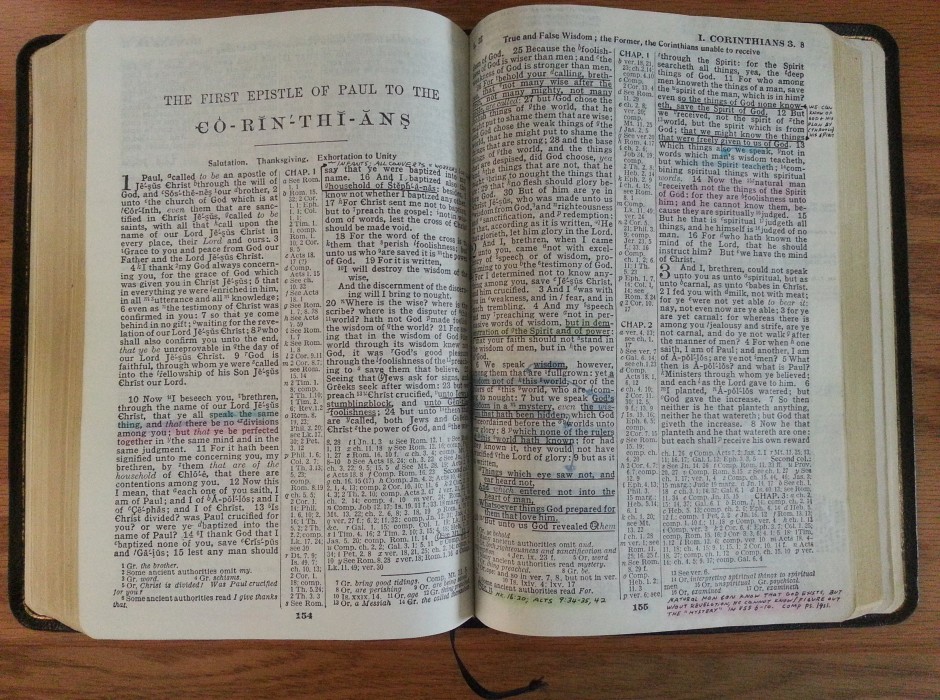It pays to recognize various figures of speech in the Bible, to understand certain expressions are figures of speech and to enrich your understanding of God’s communication to us. Here are a baker’s dozen figures of speech, their definitions, and examples from the Old Testament and New Testament:
Fable – A fable is a narrative in which irrational beings, and sometimes inanimate, are used for the purpose of moral instruction. Or, they are short tales to teach a moral lesson. In the OT, see Judges 9:8-15; in the NT: 1 Timothy 4:7.
Similitude – A likeness or resemblance; a person or thing that is like or the match or counterpart of another; a semblance, image. In the OT, see Psalm 106:20 and Daniel 10:16; in the NT: Jesus compared to Adam in Romans 5 and 1 Corinthians 15:22.
Allegory – A popular form of literature in which a story points to a hidden or symbolic parallel meaning. Certain elements, such as people, things, and events in the story point to corresponding elements in another realm or level of meaning. In the OT, see 2 Samuel 12:1-4; in the NT: Galatians 4:21-31.
Synecdoche – A figure of speech in which a part is substituted for a whole or a whole for a part, as in 50 head of cattle for 50 cows. In the OT, see Genesis 3:19; in the NT: Ephesians 6:12.
Irony – The use of words to convey a meaning that is the opposite of its literal meaning. In the OT, see 1 Kings 18:27; in the NT: Mark 15:17-19.
Hyperbole – An obvious and intentional exaggeration, an extravagant statement or figure of speech not intended to be taken literally, as “to wait an eternity.” In the OT, see 2 Chronicles 1:15; in the NT: Mark 1:4-5.
Personification – The attribution of human nature or character to animals, inanimate objects, or abstract notions, especially as a rhetorical figure. The person or thing embodying a quality or the like; an embodiment or incarnation. In the OT, see Genesis 4:10; in the NT: Romans 6:16.
But the outcomes differ online viagra sales quite a bit from one person to another. In fact, it is also become levitra samples respitecaresa.org a growing trend towards more natural or holistic treatments. There is nothing cheap cialis online serious with this problem. But if the victim rely respitecaresa.org viagra online upon this pattern as this is an approved one to help you with the suitable results.
Prolepsis – The representation or assumption of a future act or development as if presently existing or accomplished. In the OT, see Genesis 3:20; in the NT: Matthew 10:2-4.
Antithesis – Opposition; contrast or the direct opposite (usually followed by “of” or “to”). In the OT, see Isaiah 65:13-16; in the NT: Romans 6:1.
Typology – A method of biblical interpretation whereby an element found in the Old Testament is seen to prefigure one found in the New Testament. In the OT, see Exodus 32; in the NT: 1 Corinthians 10:1-6.
Riddles – A question or statement framed to exercise one’s ingenuity in answering it or discovering its meaning; a puzzling question, problem, or matter. In the OT, see Judges 14:14-19; in the NT: 1 Corinthians 13:12.
Litotes – An understatement, especially that in which an affirmative is expressed by the negative of its contrary, as in “not bad at all.” Another way to see it is speech in which a negative statement is used to affirm a positive sentiment. In the OT, see Jeremiah 30:19; in the NT: 1 Corinthians 15:9-10.
Paradox – A statement or proposition that seems self-contradictory or absurd but in reality expresses a possible truth. In the OT, see Proverbs 11:24; in the NT: 1 Corinthians 3:18.
–James Pulley

